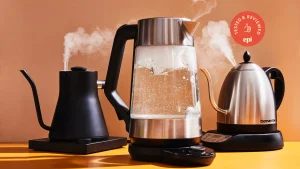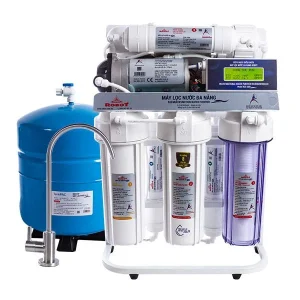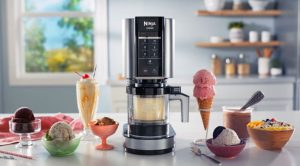Ice Maker: What Is It? How It Works, Applications, and Safe Usage Tips

Ice makers are essential appliances for producing ice quickly and efficiently, making them a must-have in homes, offices, and commercial establishments. Whether you’re hosting a party, running a restaurant, or simply enjoying cold beverages, an ice maker can be a convenient addition to your kitchen or business. In this article, we will explore what an ice maker is, how it works, its common applications, and how to use it safely.
1. What Is an Ice Maker?
An ice maker is a device designed to produce ice, typically by freezing water into solid ice cubes. It eliminates the need for traditional ice cube trays, offering a convenient and automatic solution to ice production.
Common Types of Ice Makers:
- Countertop Ice Makers: These are compact, portable machines that sit on countertops. They are ideal for home use and can produce a small to moderate amount of ice in a short period. Countertop ice makers are typically affordable and easy to use.
- Built-In Ice Makers: These are integrated into refrigerators, providing a continuous supply of ice. They are often found in higher-end refrigerators or as part of kitchen setups.
- Commercial Ice Makers: These are larger, industrial-grade machines designed for high-volume ice production. Commercial ice makers are used in restaurants, hotels, bars, and other businesses that require large quantities of ice.
- Portable Ice Makers: These machines are designed to be easily moved and used in different locations. They are often battery-operated or plug-in devices that can produce ice wherever needed.
Uses of an Ice Maker:
- Beverage Cooling: Ice makers provide a steady supply of ice for cooling beverages such as water, soda, cocktails, and juices.
- Food Preservation: Ice is essential in food industries for preserving perishable items, especially during transportation.
- Health and Medical Use: In medical settings, ice makers can be used for therapeutic purposes or to keep certain products at the required low temperatures.
2. How Does an Ice Maker Work?
The working principle of an ice maker is based on the process of freezing water into ice cubes. Here’s a step-by-step breakdown of how it functions:
Key Components of an Ice Maker:
- Water Reservoir: The water reservoir holds the water that is fed into the ice maker to be frozen into ice cubes.
- Compressor: The compressor is responsible for pressurizing the refrigerant gas, which is essential for the cooling process.
- Evaporator: This part of the ice maker helps to cool the water down by absorbing heat. When water comes into contact with the cold evaporator, it freezes and forms ice.
- Ice Mold or Tray: This is where the ice cubes are formed. The water is poured into the ice mold, where it will freeze into cubes.
- Thermostat: The thermostat ensures that the ice maker stays at the optimal temperature for freezing ice. It monitors the internal temperature and controls the freezing cycle.
- Ejector Mechanism: After the water freezes into ice cubes, the ejector mechanism pushes the ice cubes into a storage bin for use.
Ice Making Process:
- Water Fill: The ice maker fills the ice mold or tray with water from the reservoir.
- Freezing: The evaporator cools the water, causing it to freeze into solid ice cubes.
- Cube Formation: The ice cubes are formed and held in place by the mold until they are fully frozen.
- Ejection: Once the ice cubes are ready, the ejector mechanism releases them into a storage bin, and the process starts over.
In most modern ice makers, the machine automatically stops making ice once the storage bin is full. Some machines also include a self-cleaning feature to ensure sanitary ice production.
3. Applications of an Ice Maker
Ice makers are used in a variety of settings, both residential and commercial. Here are some practical applications:
Residential Use:
- Home Kitchens: Ice makers are a popular addition to home kitchens, especially in refrigerators or standalone countertop models. They provide convenience for daily use, whether it’s for drinks, snacks, or parties.
- Outdoor Events and Gatherings: Portable ice makers are great for picnics, barbecues, and outdoor events, where refrigeration may not be readily available.
- Specialty Beverages: Ice makers allow for the production of different types of ice, such as nugget ice, which is commonly used in certain beverages and restaurants.
Commercial Use:
- Restaurants and Bars: Ice makers are crucial for restaurants, bars, and cafes, as they supply the large quantities of ice needed to serve beverages and keep food at the right temperature.
- Hotels and Resorts: Hotels use ice makers in guest rooms or common areas to ensure guests have easy access to ice. Some high-end establishments even offer dedicated ice machines in suites.
- Healthcare and Laboratories: In medical settings, ice makers are used for therapeutic purposes (such as ice packs for injuries) and to store temperature-sensitive medicines and products.
Industrial and Transportation:
- Food Storage and Shipping: In the food industry, ice makers help keep seafood, meat, and other perishable goods cool during transport and storage.
- Scientific Research: In laboratories or research settings, ice is used to maintain temperatures for certain experiments and materials that require cooling.
4. How to Use an Ice Maker Safely
Using an ice maker is generally safe, but it’s important to follow some basic safety guidelines to ensure its optimal performance and longevity.
Installation and Setup:
- Proper Placement: Ensure the ice maker is placed on a flat surface with sufficient space around it for air circulation. This helps prevent overheating and ensures efficient operation.
- Water Supply: Connect the ice maker to a clean water source, especially if it’s a plumbed-in model. Make sure the water supply line is properly connected to avoid leaks.
- Electrical Safety: Always plug the ice maker into a grounded electrical outlet. Avoid using extension cords or overloading the outlet.
Regular Maintenance:
- Clean the Machine Regularly: Regular cleaning helps prevent mold, bacteria, and mineral buildup in the ice maker. Follow the manufacturer’s cleaning instructions to maintain hygiene.
- Descale the Machine: If you live in an area with hard water, scale can build up inside the machine. Use a descaling solution periodically to prevent blockages and ensure smooth operation.
- Check the Storage Bin: Empty the ice storage bin regularly to avoid excessive ice buildup. If the ice isn’t used frequently, make sure to remove it after a few days to prevent it from absorbing odors or bacteria.
- Filter the Water: If possible, use filtered water in your ice maker to reduce the risk of mineral deposits and improve the quality of the ice.
Safe Handling:
- Avoid Direct Contact with Ice: Use tongs or a scoop to handle ice to maintain hygiene and avoid contamination. Always keep the ice clean and safe for consumption.
- Prevent Overloading: Don’t overload the storage bin with ice, as this may block the ejector mechanism and reduce the efficiency of the machine.
Troubleshooting:
- Ice Production Problems: If the machine is not producing ice, check for any issues such as a clogged water line, a malfunctioning thermostat, or low water levels. Refer to the user manual for troubleshooting tips.
- Noise and Vibration: If the ice maker is making excessive noise or vibrating, check its level placement and make sure there are no obstructions blocking the machine’s airflow.
Conclusion
An ice maker is a valuable appliance that offers convenience, especially in homes and commercial settings. Whether you need ice for drinks, food preservation, or special applications, understanding how it works, its various uses, and how to maintain it safely will help you get the most out of your machine. By following safety tips and regular maintenance guidelines, you can enjoy a continuous supply of ice while ensuring that the machine remains in good working condition.







